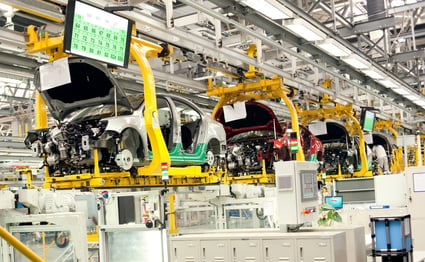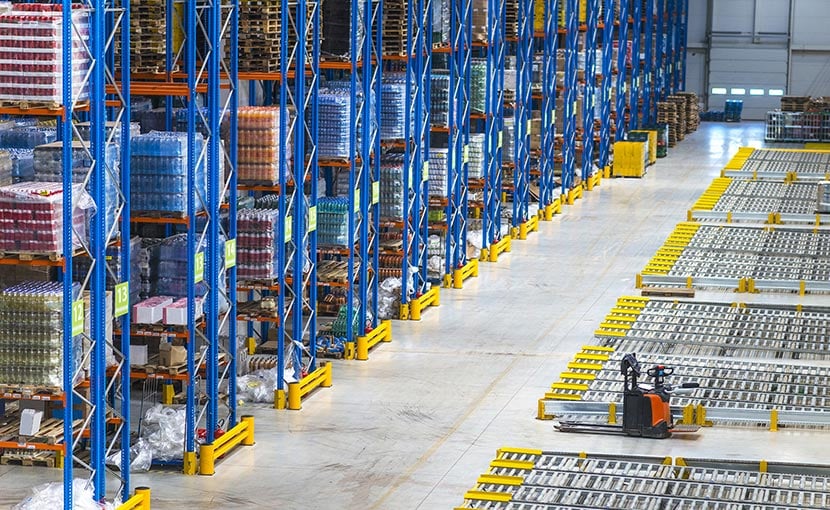Non-Traditional Supply Chains are Coming. Can You Compete?
Martin Pahulje - September 14, 2021

The supply chain industry is a competitive one. Businesses worldwide are racing to have the fastest and most efficient supply chains to keep a leg up against competitors. This had led to significant developments in optimization and innovation, often in surprising ways. In recent years, the competition in the supply chain industry has grown more intense as non-traditional businesses such as startups and digital giants enter the race. As a result, the industry is experiencing a reshaping, including supply chains as a whole. Today, supply chain managers must find ways to remain competitive and agile for their companies to survive. Fortunately, there are some key practices you can implement to stay competitive.
Staying Competitive
Many companies with non-traditional supply chains are breaking through the industry and leaving traditional companies struggling to stay ahead. In order to keep up with these changes, companies with traditional supply chains need to take note of what their competition offers. Somehow, with less experience and reputation, organizations with non-traditional supply chains are posing as worthy competition – so, what do they offer? To get ahead of your competitors, you need to understand them. To do so, we will discuss a few essential capabilities that non-traditional supply chains are characterized by. With this information, you can make the necessary changes to maintain long-lasting success.
1. Customer Relationships
One of the biggest priorities for every business is its customers. After all, your customers are the reason for your business, and they are what keep it alive. Having the ability to understand your customers – knowing which products and services they want – is critical for your company's success. To understand your customers, you must have strong customer proximity and intimacy; however, this can be challenging to maintain.
Without good customer relations, it is easy for a competitor to come in and take your customers. A common mistake that companies make is to assume that because customers have not left yet, that they won't. As a result, many businesses stop putting effort into customer relationships. This is where gaps arise in product and service offerings and often when customers become swayed by competitors.

Many companies with non-traditional supply chains entering the industry have close relationships with their customers and know how to manage customer relationships well. As they gain a foothold in the industry, they pose a real threat to companies with traditional supply chains. Fortunately, there are ways for these companies to compete. By understanding the critical touchpoints of the customer journey, you can design a supply chain that can respond to customer preferences quickly and accurately. To do so, many companies gather voice of the customer (VoC) data, which allows them to create customer journey maps. This will help you gain insights into customer demand to equip your supply chain accordingly.
2. Agility & Resiliency
Another critical supply chain capability to have under your belt is agility. Being able to respond quickly to changing market demands is crucial to staying competitive against companies with non-traditional supply chains. Most traditional supply chains are complex, consisting of long lines of command and internal silos. This design can slow down decision-making and decelerate change. On the other hand, non-traditional supply chains may be a bit smaller and thus are enabled to make decisions quickly. For this reason, it is essential that your supply chain improves in agility.
With self-forming teams and data-driven decisions, your supply chain can become much more responsive. Not only does this allow you to react to changes quickly but respond to customers more quickly and avoid delays and silos. Additionally, with data-driven decisions, decisions tend to be more accurate, leading to more efficient planning. Modern supply chain technology is enabled to automate more routine decisions, speeding up the process even further. By embracing less hierarchal leadership models, you can engage more talent in developing ideas, accelerating the decision-making process.
In addition to agility, supply chain resiliency is a crucial attribute to have. Supply chains are growing increasingly complex, so errors and delays will inevitably arise. How you handle these issues will determine the extent of their damage and your company's longevity. For this reason, it is vital that decisions can be made quickly in the event of a problem. With informed decisions and a more limited chain of command, decision-makers can communicate quickly and help your business recover from issues promptly.
3. Innovative Culture
In addition to understanding customers and meeting their needs quickly, it is critical that your company seeks innovation. As the supply chain industry is so competitive, it is essential that you can keep up and a significant aspect of that goes beyond offering the same products and services. Customer needs are quick to change, and they will always want better, smarter, and newer products, in addition to optimized services. They also expect these new products to come in a continuous flow without delay.
While it is a lot to ask for, this is the reality of our consumer culture. As a result, companies must be able to innovate their operations regularly. Supply chains must optimize their processes in order to launch new products at a faster rate to satisfy customers. To achieve this, many companies with traditional supply chains are planning to operate like a startup concerning innovation. This means that supply chain employees need to be engaged and excited about their organization. Supply chain managers must instill a sense of purpose in their workforce to boost productivity and help cultivate an environment of forward-thinking and innovation. While employees will primarily focus on their day-to-day tasks, it is important that they are hopeful of the company’s future and wish to be a part of it.
4. Integrate Old and New Business Models
A substantial advantage organizations with non-traditional supply chains have over their traditional competitors is that they don't follow established supply chain conventions. They have found a new way to operate, and they likely never used the conventional method beforehand. On the other hand, organizations with traditional supply chains are more likely to be stuck in old processes and procedures. Even if they are looking to implement a new business model, the transition may be time-consuming and complex.
New competitors are purpose-driven, with their primary business goals being customer experience or innovation instead of the traditional goals of meeting specific financial performance expectations.
But, while these new business models are the future of business, that does not mean that traditional models should be abandoned entirely. Many traditional supply chains are integrated with traditional and new business models, creating a hybrid model. This will combine the advantages of an established supply chain with the agility to support business growth and innovation. With this mindset, supply chains can continue to operate as they have been, delivering traditional products while supporting emerging new products.
Rather than focusing solely on achieving efficiency, the modern supply chain should embrace agility, resiliency, and customer experience. While non-traditional supply chains will serve as worthy competitors, traditional supply chains can optimize operations and stay competitive with a slight revamp.
Click below to download our guide to the Transformation of Manufacturing Processes.
LATEST POSTS
- Understand Circular Economy in The Manufacturing Industry
- How Can Industry 4.0 IT Integration Be Achieved Smoothly?
- The Significance of Order Sequencing in Discrete Manufacturing
- How to improve your Supply Chain Management: The Power of Control Towers
- Optimizing Human Resource Scheduling in Manufacturing: A Technological Approach


